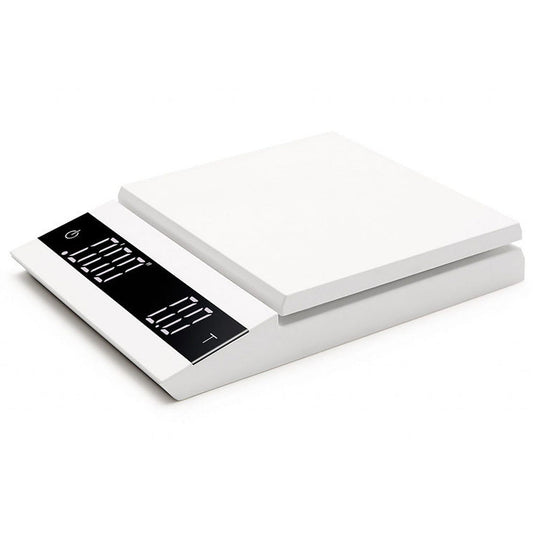What Temperature Should a Flat White Be?
It goes without saying that personal preference is the first thing you should consider, whether you're a professional Barista or a home enthusiast. If you (or your customer) prefer your coffee hotter or cooler, that is absolutely paramount.
However, this article is about the age-old question: What temperature should a Flat White be?
The Science of Milk and Sweetness
To answer this, here’s a very quick chemistry lesson on milk. For argument’s sake, we’ll focus on cow’s milk, though much of this also applies to oat milk and other plant-based alternatives.
Milk contains a compound called lactose. Lactose is a disaccharide (made of glucose and galactose). On its own, lactose doesn’t actually taste all that sweet. But when heated, lactose begins to break down into its component sugars.
Glucose and galactose have a far higher perception of sweetness than lactose. On top of that, our taste buds perceive sweetness most intensely when what we’re eating or drinking is closer to, or slightly above, body temperature.
You’ve probably noticed when drinking Flat Whites that the flavour seems to change as the drink cools: it starts less sweet, becomes sweeter, then fades again as it gets cold. Nothing dramatic is changing in the cup—most of those flavour changes come from your own taste perception.
So, What Temperature Should a Flat White Actually Be?
The honest answer is: it depends on what your target is. Different temperatures optimise different results, whether you care most about latte art, flavour quality, or simply serving the drink as hot as someone prefers.
If You Want to Maximise Latte Art
To get the best results for latte art, you should steam to around 45–50°C.
Milk steamed on the cooler side is more stable, and the liquid and foam separate much more slowly. This means it won’t split as quickly when it hits the crema, allowing you to use the very last bits of foam for more complex and detailed latte art. If the milk is too hot, it increases the rate at which the foam breaks down, and that makes pouring high-detail latte art a lot harder.
If You Want to Maximise Taste and Sweetness
If your goal is the best possible flavour, particularly with lighter roasted coffees, try steaming to around 55°C.
At this temperature, sweetness perception is maximised, and the drink is served at an ideal drinking temperature. With darker roasts, you can push the temperature slightly higher, as a little extra heat helps soften the sharper bitterness that shows up as the drink begins to cool.
If You or Your Customer Prefers Hotter Milk
That is completely fine. Some people want their Flat White hotter than the “taste” ideal — and there is nothing wrong with that. Preference always comes first, and you should always prepare the drink the way the drinker enjoys it.
That concludes this little post on milk!
Take your brewing game to the next level?
Espresso lovers can also find our guide on the Best Coffee Tampers here.
Filter coffee lovers can find our guide on the Best Pourover Filter coffee recipes here.
Find some of the best free tools to accompany your brews here.
Find your perfect coffee from Harmony's selection of coffee beans here.
Check out our guide on resting coffee to get the most out of your brews here.
Find the Best Filter Coffee Grinders For Home here.
Learn about why RDT reduces static in coffee grinding here.
Love what we do here?
Consider a Harmony coffee subscription for your home or office!
FAQs
Why are milk drinks getting colder?
In modern specialty coffee, milk drinks are often served cooler than they used to be. That’s because cooler milk brings out more sweetness, better flavour clarity, and more balance with lighter roasted espresso. Baristas aren’t making drinks colder for the sake of it, they’re in the pursuit of excellence, and trying to make them taste better.
But again, the most important rule still stands: if you or your customer prefer it hotter, make it hotter.
Why do cooler milk drinks taste sweeter?
Because lactose breaks down into glucose and galactose as milk heats, and our taste buds perceive sweetness more strongly around body temperature. That’s why a well-steamed Flat White tastes sweetest just as it hits drinking temperature.
Does this apply to oat and plant milks?
Generally, yes. Plant milks also become sweeter as they warm, and many of them pour better at slightly lower temperatures. Personally, I prefer to take the milk values, and adjust according to the brand.












